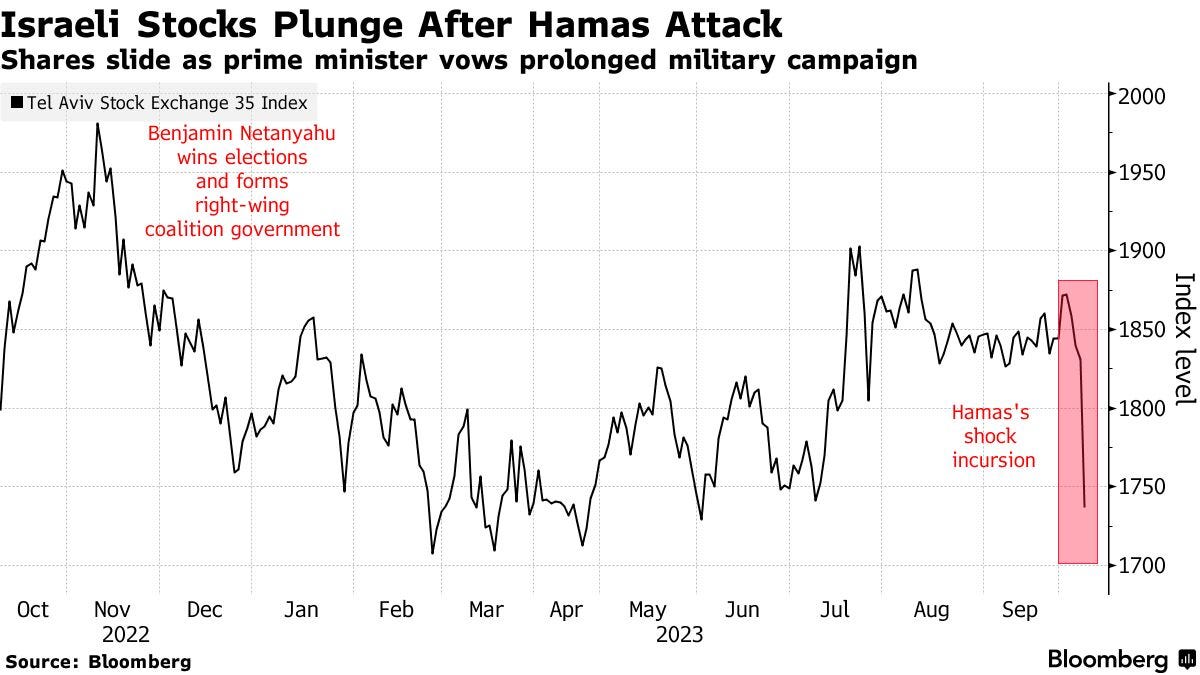Understanding the cost of war: the danger of the financialisation of damages
Isrselle fiscal and financial losses can be compensated if it wins the war. In that, I do agree with Smotrich, Ben Gvir and Netanyahu. However, there is a flip side to this thinking.
Since the beginning of this war, many estimates have been trying to come up with a figure about the financial value of the losses on both the Pal and the Isrselle sides. The majority of the analysis relies on calculating a dollar figure which captures the financial value of the losses rather than the economic value of the damages. This stems from the growing tendency to conflate finance with economics. This approach results in a misunderstanding of the deeper cost of war both sides are incurring.
To illustrate, in financial terms, the US is the wealthiest country in the world. In economic terms, the same cannot be said. The desire to financialise economics is driven by the need for ease in understanding the extremely complex economic structures and activities of modern societies. However, the danger lies in misunderstanding the real economics of war. For example, financial losses in exchanges do not translate into systematic economic damage. Hence, the stock market value going up or down is not necessarily the best way to understand the cost of war. In the context of Isrselle-Pal war, similar inferences can be made.
Isrselle fiscal and financial crises as a result of the war are not a sufficient indicator that it is losing. In fact, in all its wars in the region, the state always managed to bounce back from each war economically stronger. This is partly due to generous donations from the world Jewry and Christian Zionists and the influx of foreign investments. Additionally, land gains and capturing the value of Pal labour has helped to boost economic growth. Hence, the fiscal and financial losses can be compensated if Isrselle wins the war. In that, I do agree with Smotrich, Ben Gvir and Netanyahu. However, there is a flip side to this thinking.
For example, it is claimed that 30,000 Isrselle have permanently left the country as a result of this war. In financial terms, this can be described as a reason for the loss of tax revenues for the government. However, the economic value does not come from such a figure. People who can relocate their lives so quickly are likely to be of upper-middle and high income backgrounds. This is because they need to have pre-existing wealth or skill sets in high demand which they can use to get jobs abroad and settle. The minimum would be to have a relatively affluent family abroad that can host them. Hence, the economic loss is higher as skills and brain drain are not quantifiable directly in taxes. The structural damage due to labour market imbalances is hard to measure and will not be even possible based on public figures. Immigration patterns will also change to a more religious one rather than a secular one motivated by financial and economic incentives.
On the side of Pal as well, it is important to be careful when consuming financial data about the cost of the war. It is true that Isrselle is preventing economic activities in Gaza, but this is also the case inside Isrselle Gaza envelop and northern cities which is costing Isrselle billions of dollars. Land in in the south and the north will become less attractive to live in, assuming that is even an option, and the government will have to subsidise living there, something we are already witnessing evidence of such as offering grants to families willing to relocate back to the area. Hence, the economic loss incurred by Isrselle is much greater than that incurred by Pal in the medium and long terms.
Similarly, the loss of 30,000 Pal lives of which two-thirds are women and children does not deteriorate the Pal pool of men available for fighting. In fact, it increases it as there are more willing men to engage in such an activity. Another misunderstanding is claiming that 5% of Pal have died or been injured as a result of this war which will shrink Gaza's economy permanently. This is inaccurate. There are 15 million Pal who live around the world including in neighbouring countries. The problem is economic which is their inability to move to Pal and return to Gaza and other Pal-held territories. Thus, if Hamas succeeds in breaking the siege, many can return and engage in rebuilding and repopulating Gaza. The same can also happen in the West Bank. In the diaspora, Pal will be able to organise as a path for return for the first time is seen as plausible.
Economics and political economy not finance offer the best way of understanding the war and its outcomes.


